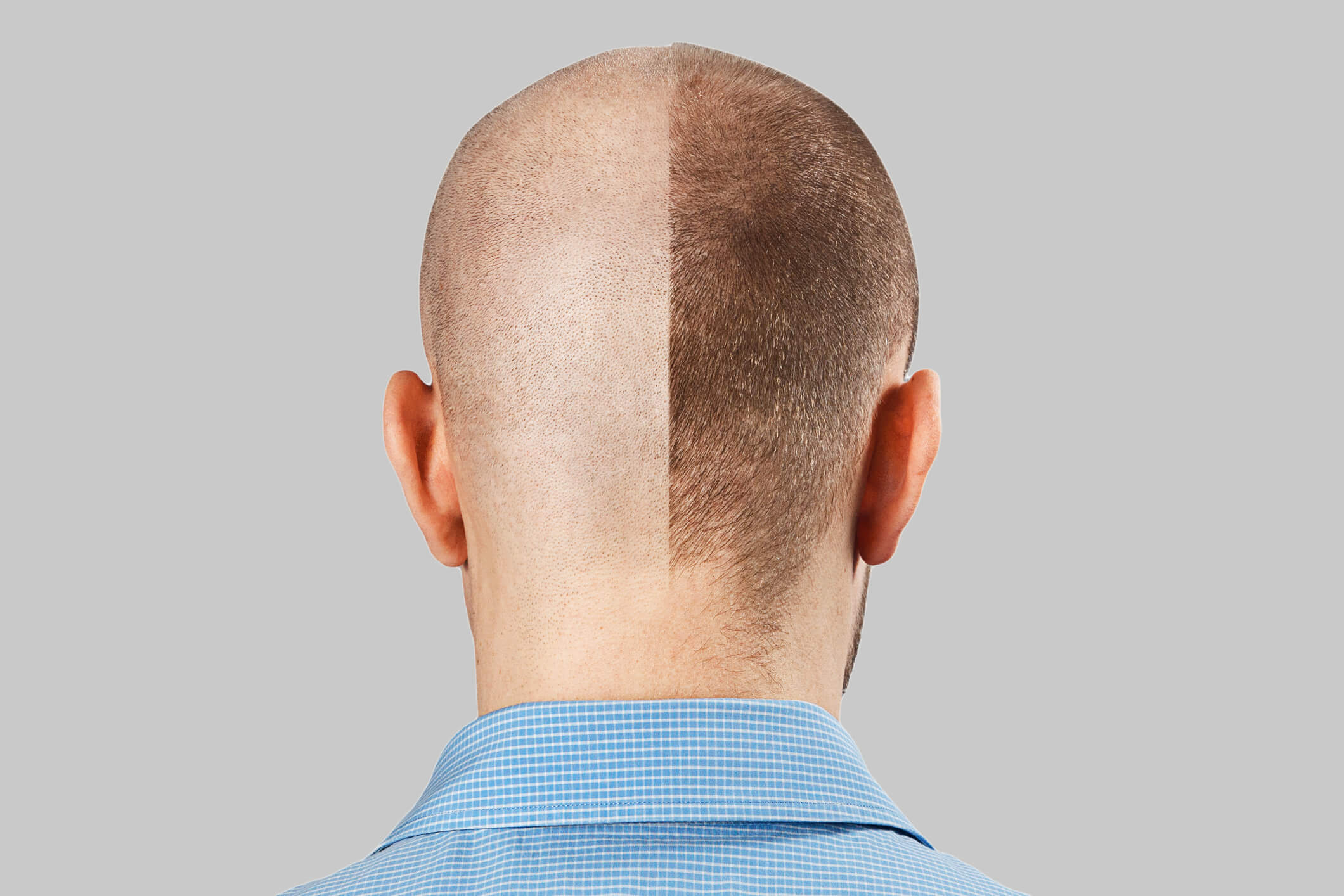Hair restoration surgery for hair density through hair transplants has become a favored solution for individuals experiencing hair loss, as it provides a natural-looking alternative. Although numerous individuals achieve satisfactory outcomes following a single transplant, some may inquire about the maximum number of hair transplants an individual may undergo. We will explore the variables that determine the number of procedures an individual can undergo and the causes for which it is prudent to opt for multiple sessions.
Understanding Hair Transplants
Comprehending hair restorations can assist you in making well-informed judgments regarding your hair restoration options. The following is a comprehensive explanation of the procedures, advantages, and factors associated with hair transplants:
What are hair transplants?
Hair transplants are surgical procedures to replace hair in the case of pattern baldness or hair thinning skull areas. They involve transferring hair follicles from a donor site, typically the back or sides of the head, to the balding or thinning regions. The objective is to produce a natural-looking outcome with minimal visible scarring.
Types of Hair Transplants and Hair Transplant Procedures
There are two types of hair transplants, FUT and FUE:
Follicular Unit Transplantation
FUT is a hair restoration technique that involves the removal of a couple of scalps from the contributor area and transplanting the follicular units into thinning or balding areas. It can produce a substantial quantity of grafts, and advancements in surgical procedures have reduced the visibility of the scar, resulting in natural-looking results for both men and women, even though it may leave a scar. However, it induces a linear scar.
- Process: A strip of epidermis containing hair follicles is excised from the donor area and subsequently dissected into individual follicular units for transplantation.
- Perks: Frequently employed to address extensive baldness; can deliver a substantial quantity of transplants in a single session.
- Disadvantages: Extended recovery time; linear scarring in the donor area.
Follicular Unit Extraction
FUE hair transplant is a hair transplant hormone technique that involves the direct extraction of individual hair follicles from the donor area. The purpose of these follicles is to be subsequently transplanted into the thinning or balder part of the hair.
- Procedure: Utilizing a small punch instrument, individual hair follicles are extracted from the donor area and transplanted into the balding or thinning areas.
- Benefits: Scarring is minimal, with small, dot-like lesions, and recovery is typically faster.
- Natural-Looking Results: Benefits of Hair Transplants Hair that has been transplanted develops consistent with the natural growth pattern of the surrounding hair.
Factors to Consider Before a Hair Transplant Procedure Eligibility
- Donor Hair Availability: The donor area must have enough robust hair.
- Scalp Health: Your scalp should heal adequately and be in good health.
- Hair Loss Pattern: Ideal candidates exhibit a consistent pattern of hair loss.
Preparation for the Procedure
- Consultation: Consult a hair restoration specialist to evaluate your requirements and establish realistic expectations.
- Medical History: Address any health conditions or medications that may impact the procedure.
Care Following the Procedure
Initial results are anticipated to be visible within a few months, with final results taking up to a year to manifest.
- Recovery Time: Anticipate some downtime for recovery.
- Follow-Up: Consistent appointments with your surgeon to assess your progress and resolve any apprehensions.
Potential Risks and Complications
- Scarring: The visible scarring may be contingent upon the method employed.
- Infection: As with any surgical procedure, there is a risk of infection.
- Graft Growth Issues: Not all transplanted follicles may survive or develop as anticipated.
- Unrealistic Expectations: It is crucial to establish realistic objectives; it is unlikely that every transplant will result in a complete head of hair.
Alternatives to Hair Transplants
If a hair transplant is not an appropriate option for you, there are alternative options, such as:
- Medications: Finasteride and minoxidil are medications that can retard hair loss and stimulate hair growth.
- Nonsurgical Treatments: Laser and platelet-rich plasma (PRP) therapy can promote hair growth.
- Hairpieces or wigs: These can offer an immediate cosmetic solution that does not require surgery.
Factors Influencing the Number of Transplants
1. The degree of hair loss
One of the primary factors why an individual may require multiple hair transplant surgeries is the severity of hair loss. Individuals with extensive baldness may not obtain complete coverage in a single session, mainly if their donor area is restricted.
2. Availability of Donor Areas
The number of transplants that can be performed is significantly influenced by the availability of healthy hair follicles in the donor area. A sufficient density in the donor area is required to ensure that the requisite follicles are supplied without causing any discernible thinning in the area. If the donor area is overharvested, it may be impossible to perform additional transplants.
3. Scalp Elasticity
Scalp elasticity is the degree to which the scalp’s skin can expand. Individuals with narrower scalps may experience difficulty undergoing multiple FUT transplants due to the limited availability of skin to be removed for grafts. With the FUE technique, this is less of a concern.
4. Desired Density
If someone desires to increase their hair density or length, they must undergo multiple transplants. The initial transplant frequently establishes a natural-looking baseline, while subsequent transplants can increase the thickness or cover in areas where the initial grafts did not adhere as anticipated.
5. Surgeon’s Evaluation and Healing Time
A surgeon may recommend that patients delay their subsequent transplants by one year or more to evaluate the efficacy of the initial procedure and ensure that the scalp has completely healed. Allowing sufficient time before deciding on an alternative procedure is crucial, as hair growth from a transplant can take up to a year to manifest its ultimate lifetime results.
What is the excessive number of hair transplants?
An excessive number of hair transplants is the term used to describe the occurrence of more surgeries than is recommended, taking into account the availability of donor hair, the health of the scalp, and the realistic cosmetic outcomes. Getting multiple hair transplants is beneficial as long as they are performed correctly. It is impossible to establish an exact number of “too many” transplants; however, two to three meticulously executed procedures are frequently sufficient for most patients. Skilled surgeons strive to achieve the desired results with minimal interventions and will advise against unnecessary procedures. However, there are constraints associated with the following factors:
Depletion of Donor Area
The donor area’s depletion is the most pressing issue associated with excessive hair transplants. Further transplants may not be feasible if the donor area (typically the back or sides of the head) is depleted of viable hair follicles. Excessive harvesting can result in a less aesthetically appealing appearance due to visible thinning or patchiness in the donor area.
Scarring and Over-Harvesting
Visible scarring may result from repeated surgeries, particularly those performed using the FUT (Follicular Unit Transplantation) method. FUT leaves a linear form of scar, and the surgeon’s capacity to extract additional donor tissue may be restricted by forming a network of scars due to multiple stages of interventions. Although individual scars are less conspicuous with FUE (Follicular Unit Extraction), scalp flexibility can be reduced due to the accumulation of small scars from multiple procedures.
Reduced Outcomes
The number of follicles produced by each subsequent hair transplant is frequently reduced, and the outcomes may not be as significant as those of the initial procedure. If a patient is consistently dissatisfied, it may not be feasible to anticipate significant improvements in outcomes from subsequent operations, particularly if the donor area is compromised.
Health Risks to the Scalp
Subsequently, undergoing excessive transplants without adequate healing may result in complications such as infections, poor healing, or reduced graft survival. To facilitate the scalp’s complete healing, a surgeon generally advises delaying a minimum of 12 months between procedures.
Psychological Issues
Patients may harbor exaggerated expectations regarding how much their hair density can be restored. This can result in disappointment over time, the majority leading some individuals to pursue unnecessary additional transplants that may be the reason for more harm than benefit. Surgical hair restoration has limitations, and the outcomes must be monitored according to each patient’s unique circumstances.
When is it appropriate to undergo another hair transplant?
When specific conditions are fulfilled, it may be appropriate to undergo another hair transplant to ensure the best possible outcome and maintain the health of the scalp and hair. Determining whether to undergo another hair transplant, it is crucial to take into account the following essential factors of a hair transplant candidate:
Adequate Healing Time
You should delay at least 12 months after your initial hair transplant before considering a second one. This enables the scalp to heal entirely and the transplanted hair to grow, a process that may require 9 to 12 months. It is impossible to accurately evaluate the necessity of a second procedure until the complete results of the initial transplant are visible.
New Hair Loss
Even after a hair transplant, individuals with progressive hair loss conditions such as male or female baldness frequently experience additional hair loss. If untreated regions experience new areas of thinning or baldness, another transplant may be necessary to preserve a natural and balanced appearance.
Inadequate Density Following the Initial Transplant
In certain instances, the initial transplant may not achieve the desirable hair density due to the number of grafts or other factors. If you are dissatisfied with your hair’s volume and donor follicles are still available, a second transplant can improve the overall result or increase the thickness.
The health of the Donor Area is Good
The availability of healthy hair in the donor area, typically the back or sides of the head, is essential for performing additional transplants. Another transplant may be viable if the donor area has sufficient density without substantial thinning or scarring.
Yearning for Cosmetic Enhancement
Some individuals may desire to make additional modifications to enhance their hairline, add density to specific regions, or achieve a more refined appearance following the initial procedure. These cosmetic enhancements can be resolved through an additional transplant, provided the cranium and donor area are healthy.
Consultation with a Hair Restoration Specialist
It is imperative to consult with a qualified surgeon who can evaluate the following before undergoing another hair transplant:
- Your donor area’s overall health.
- The likelihood of a successful second transplant.
- Assessing whether you are a suitable candidate for an alternative procedure.
Management of Expectations
It is crucial to maintain realistic expectations. Although a second or third transplant can enhance outcomes, there are restrictions on the quantity of hair that can be transplanted, and the donor area may experience visible depletion or complications if it is over-harvested.
When is it advisable to refrain from undergoing another hair transplant?
In the following situations, it is recommended that you avoid undergoing another hair transplant, as the risks may outweigh the potential benefits:
Hair Loss from Donors
One of the most critical factors is the availability of healthy donor hair. Suppose the donor area, typically the back or sides of the head, has been overharvested. In that case, it may no longer be able to provide an adequate number of follicles for additional transplants without resulting in visible depletion or patchiness. Additional surgery could result in a less aesthetically pleasing outcome, impacting both the donor and recipient areas.
Inadequate Healing from Previous Transplants
The risks of another surgery may be elevated if your previous hair transplants resulted in significant complications, such as scarring, infection, or poor healing. There is a possibility that specific individuals may not recover as anticipated, and the addition of additional trauma to the scalp can exacerbate these issues, potentially resulting in poor graft survival or adverse cosmetic outcomes.
Gradual Hair Loss
If you continue to experience substantial progressive hair loss, it may be more advantageous to postpone another transplant. Performing a transplant during an active phase of hair loss may necessitate additional interventions in the future, as new thinning areas may develop. In such instances, it may be prudent to delay treatment until hair loss has stabilized, potentially with medications such as finasteride or minoxidil.
Unrealistic Expectations
Undergoing additional surgery may only resolve the issue if you are satisfied with the results of previous procedures due to unrealistic expectations regarding the potential of hair transplants. Hair transplants are restricted in terms of density and coverage. If you anticipate a complete head of hair or extreme thickness in which the donor area is insufficient to supply follicles, another surgery may result in disappointment.
Scarring in the donor area
The natural appearance of your hair may be impacted by the presence of visible scarring in the donor area due to multiple FUT procedures. Similarly, an excessive number of FUE procedures can result in the formation of numerous minor scars. If the donor area exhibits substantial scarring from prior surgery, the likelihood of poor healing and visible scarring may be elevated by adding additional grafts.
Predisposing Health Conditions
A poor recovery or complications may result from undergoing another hair transplant if you have developed or are currently managing a chronic health condition that may interfere with healing, such as diabetes, autoimmune disorders, or blood circulation issues. The healing process may be impeded, or the risk of infection may be increased by certain medications you take for health conditions.
Psychological or Emotional Motives
It’s crucial to assess whether another surgery will effectively resolve the emotional issues that underlie your dissatisfaction with your appearance, even if the results of your previous transplants were satisfactory and realistic. Psychological support may be required instead of additional procedures for specific individuals who may elect to undergo multiple operations to rectify perceived deficiencies.
Hair Restoration Alternatives
It is prudent to forgo additional hair transplants if nonsurgical treatments, such as medication, PRP (Platelet-Rich Plasma) therapy, or laser therapy, enhance or preserve your hair. These alternatives provide a less invasive method of preserving existing hair or promoting hair growth, mainly if your donor area is restricted.
Time and Financial Factors
Hair transplants can be costly, and each procedure necessitates a recovery period. If the cost or delay is a substantial burden and the benefits of another surgery are marginal, it may be more advantageous to reconsider alternative treatments and forgo additional transplants.
Conclusion
Individual factors, including the extent of hair loss, the availability of donor hair, and the desired density, in order to determine the number of hair transplants an individual may undergo. Although some individuals may find a single procedure sufficient, others may require two or three transplants to achieve their objectives. You must seek the advice of a reputable hair transplant surgeon who can provide you with the most appropriate course of action for your specific circumstances.
Frequently Asked Questions
What is the average number of hair transplants an individual can undergo?
There is no definitive limit to the number of hair transplant operations an individual may undergo; however, most individuals accomplish their desired outcomes within two to three procedures. The quantity of transplants is contingent upon the availability of donor hair, the severity of hair loss, and the individual’s objectives.
How does the number of hair transplants an individual can undergo depend on the following factors?
The quantity of hair transplants that an individual may undergo is contingent upon a variety of factors, such as:
- Donor hair availability: The quantity of healthy hair in the donor area.
- Hair loss extent: The total area that must be covered.
- Scalp health and elasticity: The scalp’s condition can influence the ease with which it can be harvested for transplants.
- Desired hair density: Specific individuals require additional transplants to attain a fuller appearance.
For how long should I delay between hair transplants?
It is typically advised to wait at least 12 months between hair transplants. This allows you to evaluate the results accurately before determining whether another transplant is necessary, as it allows the transplanted hair to grow in and your scalp to heal fully.
Can I undergo a hair transplant if I have previously undergone one?
Indeed, a significant number of individuals undergo multiple hair transplants. If your donor area remains healthy and there is an adequate amount of hair to extract, you may undergo another transplant. Your surgeon will assess your scalp and hair condition to ascertain whether you are a suitable candidate for additional procedures.
Is it feasible to have an excessive number of hair transplants?
Yes, it is feasible to undergo an excessive number of transplants, particularly if the donor area is exhausted or if scarring from prior operations renders subsequent procedures less effective. An excessive number of transplants may cause the donor area to become thinner, and the results may be compromised.
What occurs if the hair in my donor area is exhausted?
Additional transplants may not be feasible if the donor area is depleted of nutritious hair. Hair restoration options, such as scalp micro pigmentation or nonsurgical remedies, may be considered.
Will I require an additional hair transplant in the future?
If your hair loss is progressive, you may require additional transplants to augment the density of previously transplanted areas or conceal new areas of depletion. Finasteride and minoxidil can mitigate hair loss and decrease the necessity for additional surgery.
Is the maximum number of transplants that can be transplanted during a single session?
A doctor can typically transplant 1,000 to 4,000 hair grafts in a single session, depending on the patient’s overall health, the recipient area’s extent, and the donor area’s density. Larger areas of hair loss may necessitate multiple sessions.
Potential hazards associated with undergoing multiple hair transplants?
The risks associated with undergoing multiple transplants include:
- Depletion of donor hair.
- An increase in fibrosis in the donor area.
- Increased recovery periods as a result of multiple surgeries.
- The results will be diminished if the skull is subjected to excessive strain.
How can I determine whether I am suitable for a subsequent hair transplant?
If you meet the following criteria, you are a likely candidate for another hair restoration:
- Possess an adequate amount of donor hair.
- Scalp has recovered satisfactorily from its previous operations.
- You have realistic expectations, and your hair loss has stabilized.
Are there any viable alternatives to supplementary hair transplants?
Indeed, if additional transplants are not feasible or desirable, there are a lot of alternative ways, such as:
- Finasteride and minoxidil are examples of medication.
- Platelet-rich plasma (PRP) therapy.
- Scalp micropigmentation.
- Hair growth stimulation through laser therapy.
Hair transplant operation used anesthesia?
Yes, hair transplant procedures typically involve anesthesia to ensure patient comfort during the surgery.
What is the success rate of multiple hair transplants?
The success rate of multiple hair transplants is generally high, often around 90-95% for individual graft survival. Success depends on donor area health, surgeon expertise, and proper aftercare.
Discover Your Ideal Hair Restoration Journey at Neograft Hair Restoration in Orange County with Dr. Brennan
Are you contemplating hair transplantation to achieve your desired hair size restoration outcome? At our hair transplant clinic, we recognize that pattern hair loss solutions are profoundly individual and necessitate a customized approach. Our team of seasoned hair restoration specialists is committed to assisting you in determining the appropriate amount of hair transplant surgery for your needs. At Neograft Hair Restoration Orange County, we offer an expert guide to assess your unique circumstances, including donor grafts’ hair availability, hair growth cycle, and desired results. Our personalized plans and state-of-the-art techniques ensure you receive the highest quality care tailored to your needs, whether aiming for a natural-looking hairline, addressing new thinning areas, or increasing density.
You can look to these articles or blogs to find out top information about hair transplant cases and hair loss: Does Insurance Cover Hair Transplants? And Hair Loss Myths. Contact us to schedule a consultation with one of our expert doctors. Don’t wait – visit our hair transplant clinics and start your journey with your ideal hair loss treatment need in mind.















Recent Comments